Maybe it's been a couple of months since you used your tahini to make some tasty hummus. You're thinking of dipping into your container to whip up another batch, or maybe to concoct a tangy dressing. But has the tahini gone bad?
How do you know if your tahini is not good anymore?
After all, tahini is made from ground-up, toasted, hulled sesame seeds. Most seeds are little packets of protein and oil wrapped in fiber, and oils can oxidize and turn rancid.
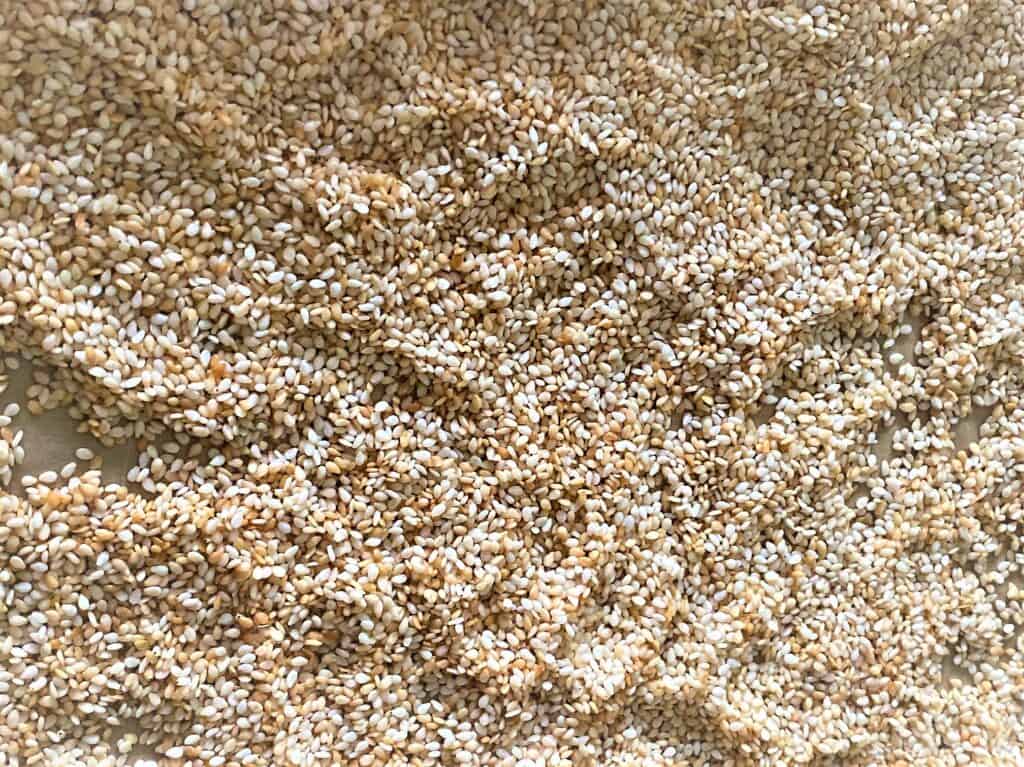
Would you like to save this recipe or article?
You won't get spam from me, I promise!
Of course, similar to any other foodstuff, tahini deteriorates over time.
I earn from qualifying purchases at no extra cost to you as part of the Amazon Affiliate program.
However, unless you store it at room temperature, it takes a long time to develop unpleasant, yucky flavors. Even at room temperature, your tahini may last 3 to 4 months in a dark pantry if the lid is closed tightly.
Many people actually prefer to store their tahini in the pantry to avoid that semi-solid texture that occurs when tahini is chilled for a long time. The thick, cold paste is difficult to mix or spread!
Keeping your tahini in the pantry is fine if you reach for it often, using it like peanut butter, up to several times per week.
I earn from qualifying purchases at no extra cost to you as part of the Amazon Affiliate program.
Does tahini need to be refrigerated? 🥶
But if you are reading this and wondering if your tahini has gone bad, it is probably not a staple food. So, the fridge may be the best storage place for your opened container.
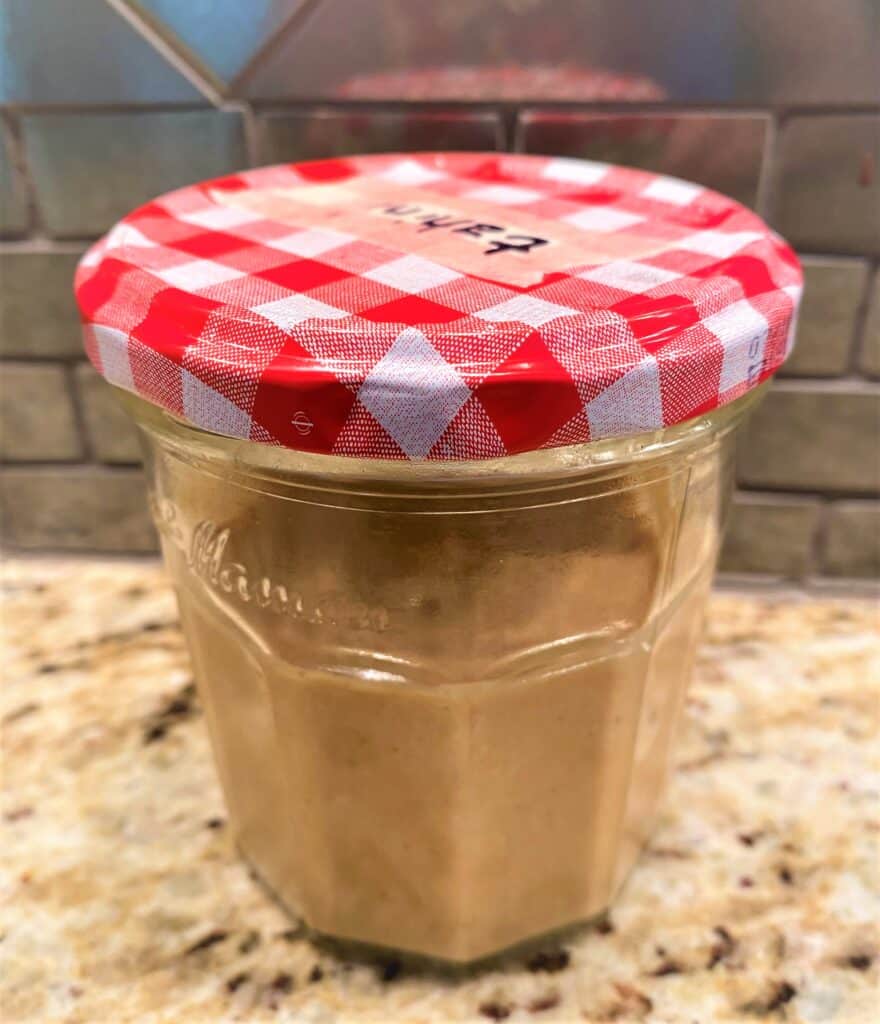
In cold environs, it stays flavorful for at least 6 months, and maybe up to a year or longer.
Most tahini, whether in a jar, plastic bottle, or tin, has instructions on the label to "refrigerate after opening."
How long does an opened container of tahini stay fresh?
- Refrigerator: 6 to 12 months
- Dark, temperature-controlled pantry: 3 to 4 months
Often, the oil and seed paste separate into distinct layers. This is normal.
It's still fine to cook with or use as a drizzle on cooked foods. To emulsify, just blend with a couple of tablespoons of hot water and use (affiliate link) a hand blender. This hack works fine with cold tahini.
How to fix hard, separated tahini
Another way to re-join the oil and the sesame paste is to microwave a nearly full container at a power level of 20% to 30% for no more than a minute. Check for softening and stir with a fork if it has loosened up.
PIN IT!!!
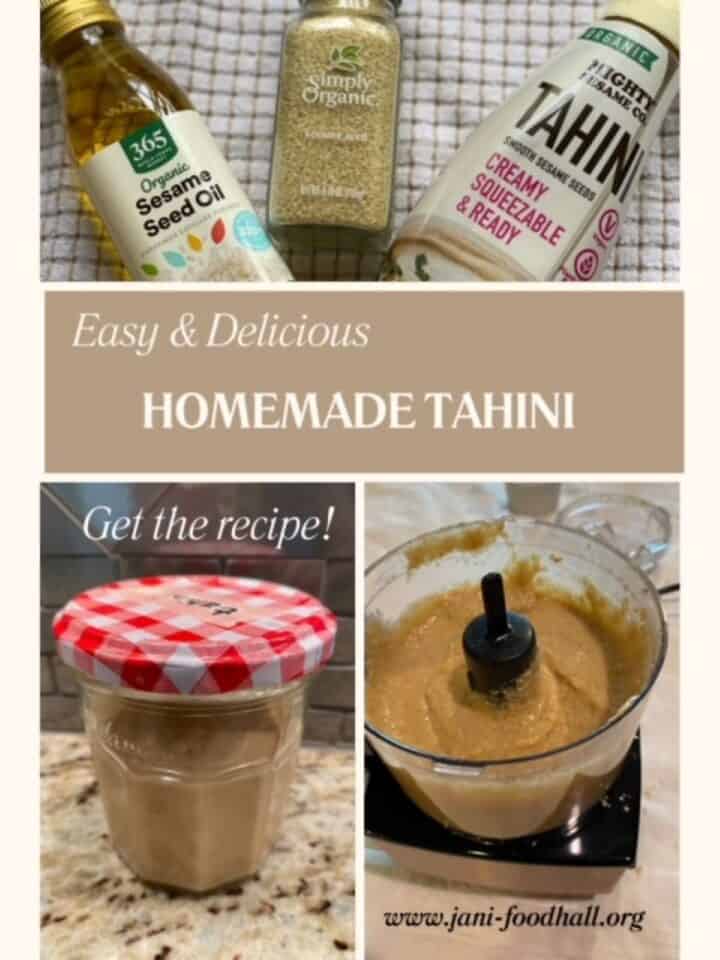
Still firm? Continue to microwave at the same power in 30-second intervals until you can stir it. (Only use microwave-safe containers like glass or plastic with the microwave-safe symbol. Never use metal!)
Better yet, if you have time, pull your tahini out of the fridge and let it sit for 2 to 4 hours on the counter before mixing.
Is your old jar of tahini a keeper?
Of course, the classic way to check for spoiled food is by the best buy or expiration date on the package. That said, try using your nose and tastebuds to detect off-odors and acrid flavors.
Sesame seeds are loaded with antioxidants like sesamin, sesamolin, and tocopherols like vitamin E, a natural preservative. I've even read that an unopened package of sesame seeds can stay fresh for three or four years -- at room temperature!
An unopened container of tahini should stay fresh in the pantry for up to two years.
Will eating rancid tahini make you ill?
The good news is that even if your two-year-old tahini tastes terrible, it probably won't make you sick. At least, it won't make you retch right away.
The bad news is that you should toss it in the trash because oxidized oils can contribute to inflammation.
Actually, tahini is sort of a Jekyll-Hyde paste. When it's good, it's very good for your health. When it's bad; well, it could be very bad.
Sesame seeds are a great source of minerals like iron, calcium, magnesium, and potassium as well as antioxidants. (This may be why some ancient medicine traditions turn to sesame for anti-aging and longevity.)
For more information on the power of seed nutrition, read Sunflower Seed Butter vs Peanut Butter or my blog with a recipe for chocolate pumpkin seed butter. Seeds are the (nutrition) bomb!
All that super-nutrition is for naught when the seeds have gotten too old!
When spoiled and rancid, they will most likely have the opposite effect. Oxidized oils are thought to raise cholesterol and contribute to systemic inflammation in your body.
They are dangerous for your cells and genetic material! But not, immediately. You can eat oils that are past their prime and feel okay. Over time, however, rancid oils from tahini and other sources might contribute to poor health including accelerated aging.
Best practice is to sniff and even, taste. If the vibrant sesame aroma and flavor are gone, the tahini may not be fully spoiled. But, you know your food will taste better and offer more nutrition when you sauce it with fresh tahini.
Homemade tahini
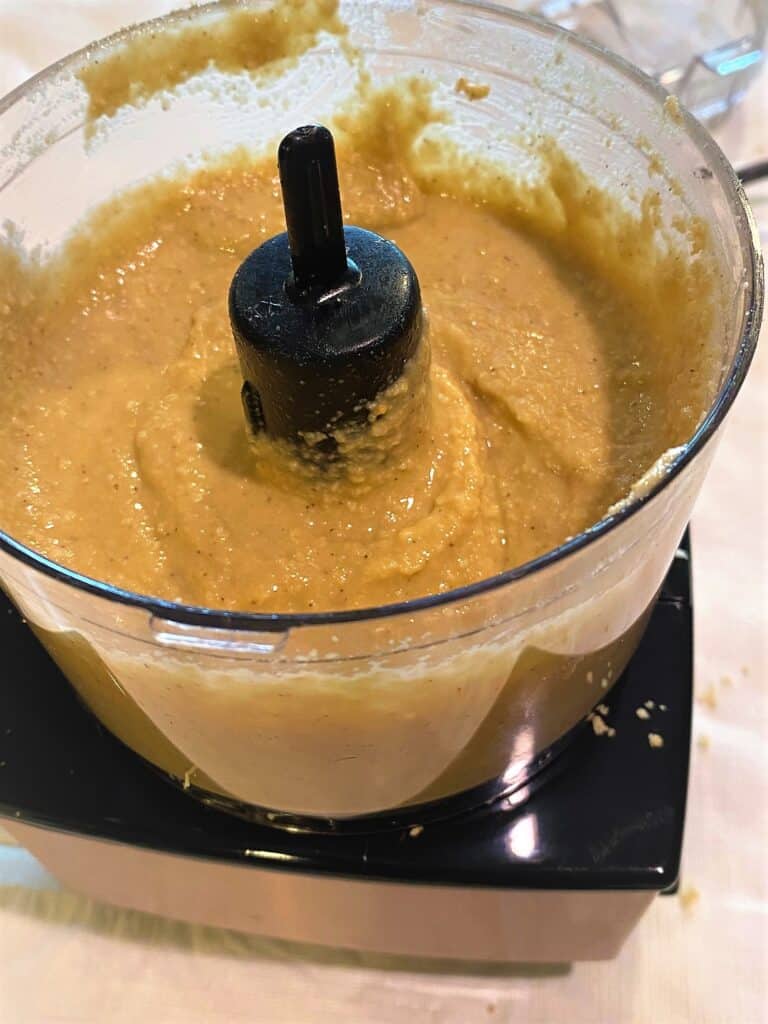
You can easily make your own tahini at home with a blender or food processor. This may help ensure a fresh product. Another advantage is that you can make it in smaller amounts — closer to what's needed in recipes.
How to Make
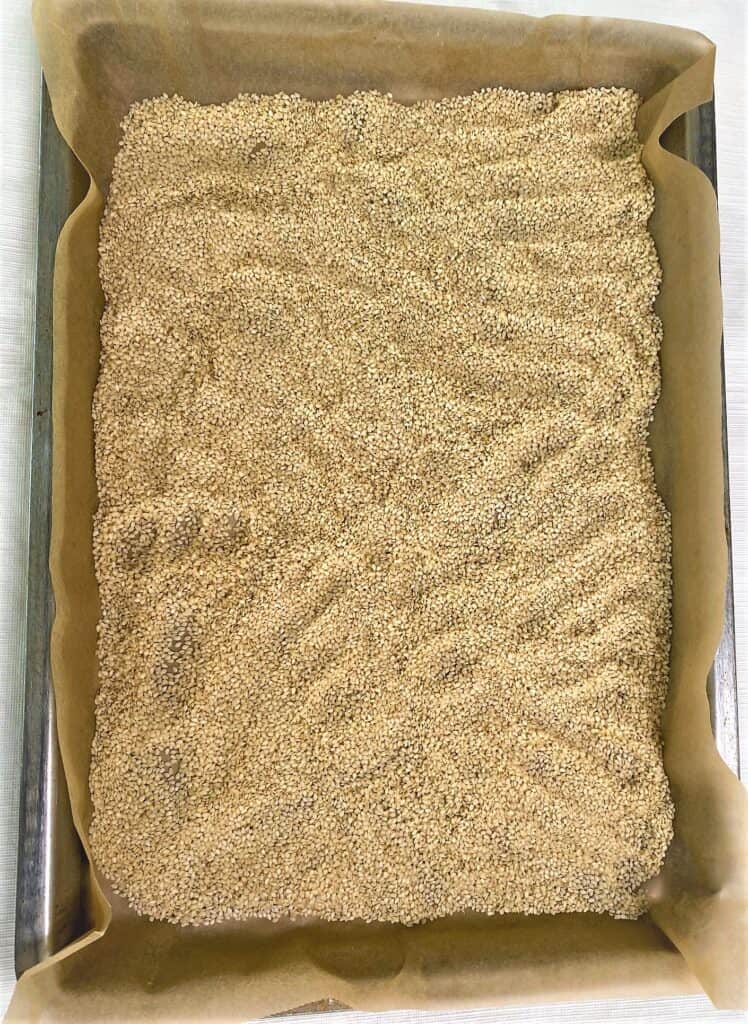
Briefly toast the sesame seeds and grind them up with a little oil.

When the mixture looks smooth in the food processor, pour it into a jar or other container with a lid. Use a spatula to scrape the sides so you don't leave any behind!
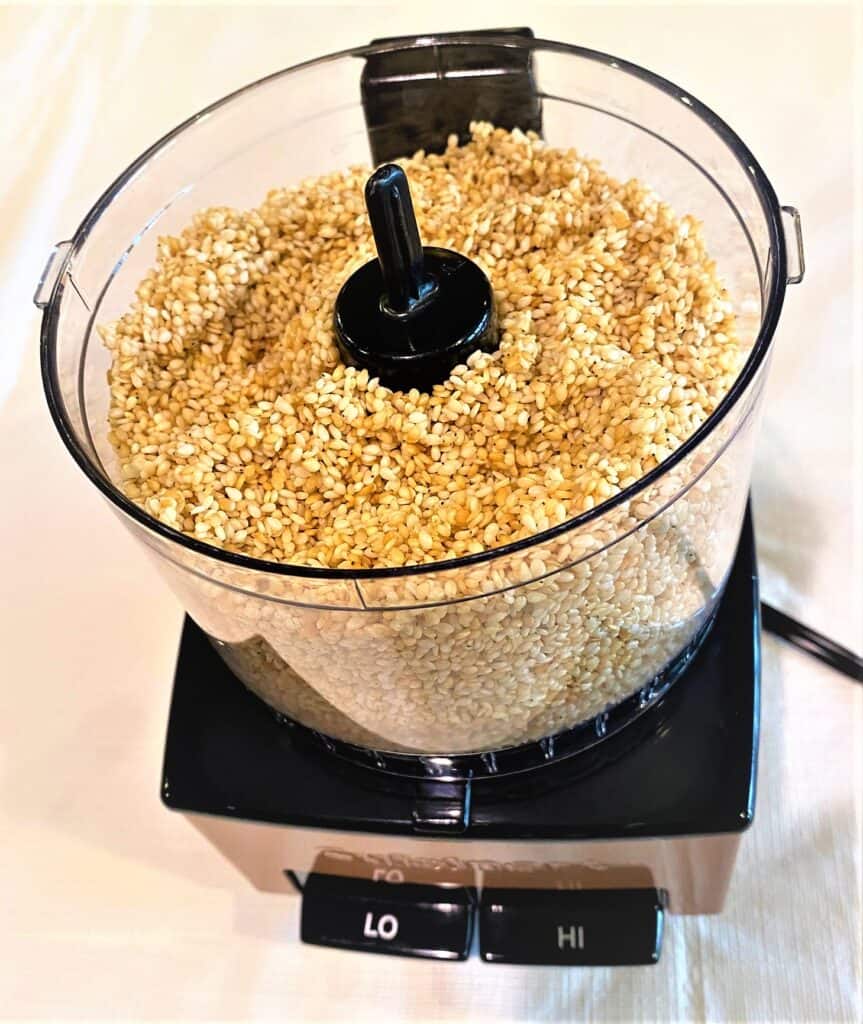
Grind them in the food processor with a small amount of neutral-tasting oil.
The trickiest part of making tahini is toasting the seeds. You have to watch them like a hawk because they burn in a flash!
Search your pantry for neutral or mild, pleasant-tasting oil. Strongly flavored oils don't pair well with the toasted seeds. So, toasted sesame oil is not the best choice, but plain sesame oil is fine.
The same holds true for olive oil. Leave the expensive, fruity, green stuff on the shelf; a more basic EVOO will taste better. Other oils to consider are avocado, safflower, and sunflower.
Tahini online
- If you're shopping online for tahini, here are a few choices:
- Mighty Sesame Co.'s Organic Tahini (affiliate link) comes in a user-friendly plastic squeeze bottle. The 10.9-ounce bottle costs $8.80.
- The silky smooth (affiliate link) tahini from Soom foods comes from a single source. It's sold in 16-ounce containers. A 2-pack is $21.99.
- A 10.6-ounce jar of (affiliate link) Trader Joe's Organic Tahini is $11.99.
Price includes shipping for Amazon Prime members.
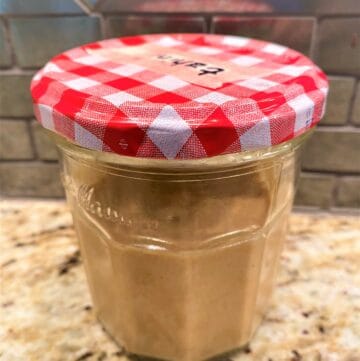
Easy Homemade Tahini
Equipment
- Spatulas
- Parchment paper
Ingredients
- 1 cup sesame seeds,
- 3 Tablespoons sesame oil, plain not toasted
- pinch salt
Instructions
- Wash hands, lathering with soap and rinsing with running water.
- Preheat oven to 350 F. Line a 13-inch sheet pan with parchment paper. Spread sesame seeds over the parchment. Roast sesame seeds in oven until lightly golden. This usually takes about 8 to 9 minutes.(Bear in mind that ovens can vary. You must watch the seeds carefully because they can go from golden to burned in a few seconds.)Remove seeds from oven and let cool for about 10 minutes.
- Pour them into the bowl of a small food processor or blender container. Add the sesame oil and salt. Process or blend until the seeds have butterized and the mixture is smooth.
- Use a spatula to scrape the tahini from the processor (or blender) into small storage container.Store in the fridge or a dark pantry, if you will use it frequently.
Video
Notes
Nutrition
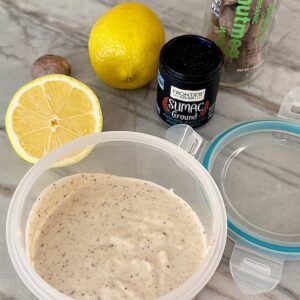
Greek Yogurt Tahini Sauce with Sumac
Equipment
- Jar or bowl
- Small measuring cup or set of spoons
- Whisk
Ingredients
- 3 Tablespoons tahini,
- 2 Tablespoons lemon juice, from ½ a large lemon
- 2 Tablespoons Greek yogurt
- 1 Tablespoon olive oil, extra virgin
- 2 Tablespoons hot water
- 1 teaspoon honey
- ½ teaspoon sumac
- ¼ teaspoon salt
- dash cayenne (optional)
- smidgen nutmeg (optional)
- 1 clove garlic, large, pressed
Instructions
- Wash hands, lathering with soap and rinsing with running water.
- Place all ingredients in a small bowl and whisk until well combined.Alternatively, combine all ingredients in a small jar. Put the lid on and shake until emulsified.If necessary, add more water to loosen the sauce and make it whiskable or shakable.
- Drizzle onto grilled proteins, cooked vegetables, or falafel. You can also serve it as a dip for cut pitas and raw vegetables.
Notes
Nutrition
COPYRIGHT © 2021 FOOD HALL BY JANI


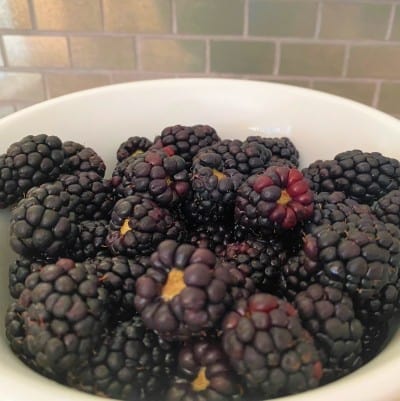


Jani H. Leuschel
Yes! This tasty sauce does surprise you with many uses. Glad you liked it!!
Ruth
An amazing sauce! I had no idea it would be so tasty, and although I’ve only used it twice, it is really smooth and adaptable, especially if I leave out the cayenne as hot stuff is not my forte’!